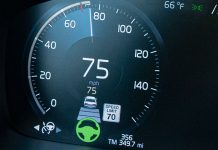The redesigned 2020 Ford Explorer, a midsize SUV, offers better protection in the driver-side small overlap front test than earlier models, but hasn’t improved enough to qualify for a 2019 safety award. Crashworthiness ratings for the Explorer also apply to the all-new 2020 Lincoln Aviator.
n the driver-side small overlap test of the Explorer, the structure held up well overall — an improvement over the severe intrusion seen in the Explorer prior to the redesign. However, in the test of the new model, there was enough intrusion into the outboard part of the footwell to elevate the risk of injury to the driver’s left leg, as indicated by measures taken from the dummy, resulting in an overall rating of acceptable.
A good rating in the driver-side small overlap crash test is a requirement for both the 2019 TOP SAFETY PICK and TOP SAFETY PICK+ awards, so neither the Explorer nor Aviator is eligible.
The two models earn good ratings in the moderate overlap front, side, roof strength and head restraint evaluations. Neither model has been evaluated in the passenger-side small overlap crash test. The previous generation of the Explorer earned a poor rating in the passenger-side test.
Ford had expected the Explorer to earn a good rating in the driver-side small overlap test and said it would investigate why it didn’t. The automaker plans to implement changes with the aim of improving the vehicle’s performance for a future test.
The 2020 Explorer and Aviator are both equipped with a standard vehicle-to-vehicle front crash prevention system that scores a superior rating in Institute tests. The SUVs are also available with a second, optional system that also rates superior. Both systems prevented collisions in 12 and 25 mph tests.
The two models differ in headlight performance. All Explorers built after June 2019 earn an acceptable headlight rating. The Aviator’s base headlights — static LED reflectors — rate marginal, while its available curve-adaptive headlights earn a good rating.
The Explorer and Aviator each earn an acceptable rating for ease of use of the vehicles’ LATCH hardware. LATCH, which stands for Lower Anchors and Tethers for Children, is a system of attachment hardware for child restraints.













